Sub Pop
 It's hard to talk about this album without referring back to thephenomenal track from 2001, "(This is the Dream of) Evan and Chan" byDntel, as that was the first collaboration between Death Cab forCutie's singer Ben Gibbard and Jimmy Tamborello, the one-man powerhousebehind Dntel. This was possibly one of my favorite songs from one of myfavorite albums of 2001, where chaos and mayhem was tied together by afrail, unobtrusive voice, quietly singing an almost nonsensical cartoonstory. Naturally, this type of collaboration, which yielded results noless than monumental, opened the opportunity for future works betweenthe two entities with potentially similar results. The end result,however, this disc, has got to be one of the weakest pieces ofelectronic dribble since Anything Box. I swear, I've heard numerousrougher, tougher, more ballsy recordings from other electronic maleduos like the Pet Shop Boys, Soft Cell, and Electronic. Even Erasuresounds like a mannish testosterone-fuelled rockhouse compared to ThePostal Service! Whereas Tamborello's music as Dntel was clearly notwritten for the sole purpose of being the backdrop of vocals, it wasnot dependent on a singer, the music could have clearly stood alone.The disjunct rhythms, distorted sounds and unpredictable melodies whichcommanded attention are all completely gone and forgotten, as the musichere sounds like a half-assed attempt to make lame pop ditties. Themelodies are dull and unchallenging, whipped together with presetkeyboard sounds and only a minimal amount of thought put intoarrangement. Gibbard's vocals certainly don't help much, as by thethird track I'm feeling nauseous. The addition of female vocals seemsboth pointless and generic as girls (ironically each named Jennifer)don't usually take the opportunity to harmonize, but simply sing thesame notes as Gibbard, only an octave higher. The album's titlecouldn't be more appropriate, as the two could have easily madesomething incredible, but in the end, decided to simply give up.
It's hard to talk about this album without referring back to thephenomenal track from 2001, "(This is the Dream of) Evan and Chan" byDntel, as that was the first collaboration between Death Cab forCutie's singer Ben Gibbard and Jimmy Tamborello, the one-man powerhousebehind Dntel. This was possibly one of my favorite songs from one of myfavorite albums of 2001, where chaos and mayhem was tied together by afrail, unobtrusive voice, quietly singing an almost nonsensical cartoonstory. Naturally, this type of collaboration, which yielded results noless than monumental, opened the opportunity for future works betweenthe two entities with potentially similar results. The end result,however, this disc, has got to be one of the weakest pieces ofelectronic dribble since Anything Box. I swear, I've heard numerousrougher, tougher, more ballsy recordings from other electronic maleduos like the Pet Shop Boys, Soft Cell, and Electronic. Even Erasuresounds like a mannish testosterone-fuelled rockhouse compared to ThePostal Service! Whereas Tamborello's music as Dntel was clearly notwritten for the sole purpose of being the backdrop of vocals, it wasnot dependent on a singer, the music could have clearly stood alone.The disjunct rhythms, distorted sounds and unpredictable melodies whichcommanded attention are all completely gone and forgotten, as the musichere sounds like a half-assed attempt to make lame pop ditties. Themelodies are dull and unchallenging, whipped together with presetkeyboard sounds and only a minimal amount of thought put intoarrangement. Gibbard's vocals certainly don't help much, as by thethird track I'm feeling nauseous. The addition of female vocals seemsboth pointless and generic as girls (ironically each named Jennifer)don't usually take the opportunity to harmonize, but simply sing thesame notes as Gibbard, only an octave higher. The album's titlecouldn't be more appropriate, as the two could have easily madesomething incredible, but in the end, decided to simply give up.
 It's hard to talk about this album without referring back to thephenomenal track from 2001, "(This is the Dream of) Evan and Chan" byDntel, as that was the first collaboration between Death Cab forCutie's singer Ben Gibbard and Jimmy Tamborello, the one-man powerhousebehind Dntel. This was possibly one of my favorite songs from one of myfavorite albums of 2001, where chaos and mayhem was tied together by afrail, unobtrusive voice, quietly singing an almost nonsensical cartoonstory. Naturally, this type of collaboration, which yielded results noless than monumental, opened the opportunity for future works betweenthe two entities with potentially similar results. The end result,however, this disc, has got to be one of the weakest pieces ofelectronic dribble since Anything Box. I swear, I've heard numerousrougher, tougher, more ballsy recordings from other electronic maleduos like the Pet Shop Boys, Soft Cell, and Electronic. Even Erasuresounds like a mannish testosterone-fuelled rockhouse compared to ThePostal Service! Whereas Tamborello's music as Dntel was clearly notwritten for the sole purpose of being the backdrop of vocals, it wasnot dependent on a singer, the music could have clearly stood alone.The disjunct rhythms, distorted sounds and unpredictable melodies whichcommanded attention are all completely gone and forgotten, as the musichere sounds like a half-assed attempt to make lame pop ditties. Themelodies are dull and unchallenging, whipped together with presetkeyboard sounds and only a minimal amount of thought put intoarrangement. Gibbard's vocals certainly don't help much, as by thethird track I'm feeling nauseous. The addition of female vocals seemsboth pointless and generic as girls (ironically each named Jennifer)don't usually take the opportunity to harmonize, but simply sing thesame notes as Gibbard, only an octave higher. The album's titlecouldn't be more appropriate, as the two could have easily madesomething incredible, but in the end, decided to simply give up.
It's hard to talk about this album without referring back to thephenomenal track from 2001, "(This is the Dream of) Evan and Chan" byDntel, as that was the first collaboration between Death Cab forCutie's singer Ben Gibbard and Jimmy Tamborello, the one-man powerhousebehind Dntel. This was possibly one of my favorite songs from one of myfavorite albums of 2001, where chaos and mayhem was tied together by afrail, unobtrusive voice, quietly singing an almost nonsensical cartoonstory. Naturally, this type of collaboration, which yielded results noless than monumental, opened the opportunity for future works betweenthe two entities with potentially similar results. The end result,however, this disc, has got to be one of the weakest pieces ofelectronic dribble since Anything Box. I swear, I've heard numerousrougher, tougher, more ballsy recordings from other electronic maleduos like the Pet Shop Boys, Soft Cell, and Electronic. Even Erasuresounds like a mannish testosterone-fuelled rockhouse compared to ThePostal Service! Whereas Tamborello's music as Dntel was clearly notwritten for the sole purpose of being the backdrop of vocals, it wasnot dependent on a singer, the music could have clearly stood alone.The disjunct rhythms, distorted sounds and unpredictable melodies whichcommanded attention are all completely gone and forgotten, as the musichere sounds like a half-assed attempt to make lame pop ditties. Themelodies are dull and unchallenging, whipped together with presetkeyboard sounds and only a minimal amount of thought put intoarrangement. Gibbard's vocals certainly don't help much, as by thethird track I'm feeling nauseous. The addition of female vocals seemsboth pointless and generic as girls (ironically each named Jennifer)don't usually take the opportunity to harmonize, but simply sing thesame notes as Gibbard, only an octave higher. The album's titlecouldn't be more appropriate, as the two could have easily madesomething incredible, but in the end, decided to simply give up. 

 After concentrating on other projects for most of last year including film soundtracks, remixes and sessions for other artists such as Tori Amos and Afro Celt Sound System, Wobble returns with a new solo album on his own label. Perhaps it's too solo.
After concentrating on other projects for most of last year including film soundtracks, remixes and sessions for other artists such as Tori Amos and Afro Celt Sound System, Wobble returns with a new solo album on his own label. Perhaps it's too solo.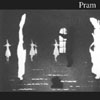 Since the late '80s, the Birmingham, UK quartet Pram has released a steady stream of albums and EPs marked with a cinematic and childlike character. Their obsession with dolls, toys and all things antiquated and ephemeral (as evidenced in titles like "Penny Arcade" and "Paper Hats", not to mention the band's name and their album artwork) give me the impression that they should be scoring films for the Brothers Quay.
Since the late '80s, the Birmingham, UK quartet Pram has released a steady stream of albums and EPs marked with a cinematic and childlike character. Their obsession with dolls, toys and all things antiquated and ephemeral (as evidenced in titles like "Penny Arcade" and "Paper Hats", not to mention the band's name and their album artwork) give me the impression that they should be scoring films for the Brothers Quay.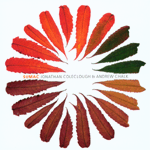 In print once again is the CD edition of "Sumac," a 71+ minute extended version of the same track which originally appeared on a one-sided transparent 12" single released in 1997 by Robot. For the duration of the track, a solid bass tone underscores while unidentifiable flying objects and whispery homemade wind instruments play and reverberate madly.
In print once again is the CD edition of "Sumac," a 71+ minute extended version of the same track which originally appeared on a one-sided transparent 12" single released in 1997 by Robot. For the duration of the track, a solid bass tone underscores while unidentifiable flying objects and whispery homemade wind instruments play and reverberate madly.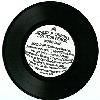 Amidst the flurry of 21st Century Throbbing Gristle activity quietlycomes something new from Genesis P-Orridge. The appearance of this 7"is modest enough—black vinyl with no more than credits on the whitelabel and a see-through sleeve—but what's hidden within the grooves ismuch more colorful. Side A is a collaboration with Carl Abrahamsson andThomas Tibert, now known as Cotton Ferox (formerly known as WhiteStains circa their 1990 collaboration with P-Orridge on At Stockholm).The foundation of "Word Ship" seems to be ethnic percussion loops as anambient haze fills in patches like a fog. Genesis matter-of-factlyanswers his own questions, like "where do you live?," "I travel,""where are you from?," "I just travel," "where were you born?," "I'malways traveling," "what do you do?," "I travel," and finally, "wherewould you be?," "traveling." The track taps the same sort ofpsychedelic dream vibe of Psychic TV's under appreciated Trip Resetalbum from 1996. The "Cosmopolitan Dub" is altogether differentmusically with more sound effects and chorus-effected beats. Side B isby Thee Majesty, GP-O's post-PTV group with Bryin Dall on guitars andLarry Thrasher on percussion and samplers. "Soul Searching" wasrecorded on Alcatraz, oddly enough, and complements the sound of theother side nicely. Genesis recites words in a narcotic deadpan over adirge and deep drum loop reminiscent of PTV's quasi-tribal-technoperiod. What a pleasant surprise. I'm happy to hear Genesis and friendsfurther explore these auras. Side B also includes 23 (of course) lockedgrooves, recycled matter from the songs, by Deftly-D of VoidstarProductions. More blasts from the past are on the way as much ofPsychic TV's back catalog is being reissued by the UK's VoiceprintRecords, beginning in March.
Amidst the flurry of 21st Century Throbbing Gristle activity quietlycomes something new from Genesis P-Orridge. The appearance of this 7"is modest enough—black vinyl with no more than credits on the whitelabel and a see-through sleeve—but what's hidden within the grooves ismuch more colorful. Side A is a collaboration with Carl Abrahamsson andThomas Tibert, now known as Cotton Ferox (formerly known as WhiteStains circa their 1990 collaboration with P-Orridge on At Stockholm).The foundation of "Word Ship" seems to be ethnic percussion loops as anambient haze fills in patches like a fog. Genesis matter-of-factlyanswers his own questions, like "where do you live?," "I travel,""where are you from?," "I just travel," "where were you born?," "I'malways traveling," "what do you do?," "I travel," and finally, "wherewould you be?," "traveling." The track taps the same sort ofpsychedelic dream vibe of Psychic TV's under appreciated Trip Resetalbum from 1996. The "Cosmopolitan Dub" is altogether differentmusically with more sound effects and chorus-effected beats. Side B isby Thee Majesty, GP-O's post-PTV group with Bryin Dall on guitars andLarry Thrasher on percussion and samplers. "Soul Searching" wasrecorded on Alcatraz, oddly enough, and complements the sound of theother side nicely. Genesis recites words in a narcotic deadpan over adirge and deep drum loop reminiscent of PTV's quasi-tribal-technoperiod. What a pleasant surprise. I'm happy to hear Genesis and friendsfurther explore these auras. Side B also includes 23 (of course) lockedgrooves, recycled matter from the songs, by Deftly-D of VoidstarProductions. More blasts from the past are on the way as much ofPsychic TV's back catalog is being reissued by the UK's VoiceprintRecords, beginning in March.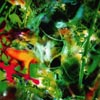 In the 1990s, the Young Gods could have been found releasing albums onsizable international record labels and touring with big acts likeMinistry. Things have been relatively quiet, however, in the last fiveyears for the Swiss-based 21 year old group. Various side projects byAlain Monod as Al Comet and Franz Treichler with Heaven Deconstructionwere indicative of a split, but after recruiting Bernard Trontin ondrums in 1999, the Young Gods began working on this, their sixth studioalbum. Treichler's vocals are more tamed now than before, set against acrystal clear produced version of futuristic space rock. More thanever, the Young Gods sound like The Doors of the space age or apsychedelic version of their fellow countrymen, Yello. Comparisonsalone, however, don't do them justice. The Young Gods explore aslightly creepy, unsettling urban atmosphere. Starting off withstraight-forward drum and bass-influenced electronic rock in"Lucidogen," they get more and more into their own strange breed ofmodern psychedelia. The album builds in a suspense song after songuntil it reaches its peak with "Toi Du Monde," the album's longesttrack. Here, a heavy beat is paired with whispered French and Englishvocals, resulting in a crushing sound with irresistable grooves, andperhaps an attempt for the "Young" Gods not to appear middle-aged, whencompared to the light-hearted instrumental, "Love 2.7." Hopefully,there won't be another 3-4 years until the next album as it seems theYoung Gods have only begun to build up steam again.
In the 1990s, the Young Gods could have been found releasing albums onsizable international record labels and touring with big acts likeMinistry. Things have been relatively quiet, however, in the last fiveyears for the Swiss-based 21 year old group. Various side projects byAlain Monod as Al Comet and Franz Treichler with Heaven Deconstructionwere indicative of a split, but after recruiting Bernard Trontin ondrums in 1999, the Young Gods began working on this, their sixth studioalbum. Treichler's vocals are more tamed now than before, set against acrystal clear produced version of futuristic space rock. More thanever, the Young Gods sound like The Doors of the space age or apsychedelic version of their fellow countrymen, Yello. Comparisonsalone, however, don't do them justice. The Young Gods explore aslightly creepy, unsettling urban atmosphere. Starting off withstraight-forward drum and bass-influenced electronic rock in"Lucidogen," they get more and more into their own strange breed ofmodern psychedelia. The album builds in a suspense song after songuntil it reaches its peak with "Toi Du Monde," the album's longesttrack. Here, a heavy beat is paired with whispered French and Englishvocals, resulting in a crushing sound with irresistable grooves, andperhaps an attempt for the "Young" Gods not to appear middle-aged, whencompared to the light-hearted instrumental, "Love 2.7." Hopefully,there won't be another 3-4 years until the next album as it seems theYoung Gods have only begun to build up steam again. 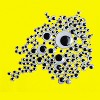 With last year's Octopus Off-Broadway,Parlour showed their rare ability to set your cerebral cortex ablazetrack after track. The album just never let up. In keeping with thistheme, Tim Furnish and Co. release Googler, only nine monthsafter Parlour's debut, not letting fans of the first album catch theircollective breath. From the looks of things, Parlour may be able tokeep up this pace. All of these tracks were recorded three to fiveyears ago, suggesting that this group has a lot of music in the canwaiting merely for polishing and mixing. It's anything but canned,though: Googler is certainly a polished release. Again, Parlouris able to keep me glued to the speakers with infectious grooves andtrippy elements. From the first track, it's almost business as usual on"Jololinine," where interweaved guitar lines and thudding bass lay thegroundwork for percussions, both real and sampled. "Distractor" isalmost a departure, with a workhorse beat and driving energy, driven byan almost manic bassline and steady powerful drums. Then it's back toclassic Parlour: "Over the Under" is the Spider-Man theme of the 21stcentury—an underneath-the-skin builder with great effects and hypnoticrhythm. Parlour just make it all sound so easy. Maybe too easy. Some ofthe same tricks on Octopus are also here, with "Hop Pife,"containing the same eerie effect from the first track on that album butextending it out far further and with greater success. Thus, eventhough you may hear some of the same elements you've heard before, themusic never bores you. "Pife" is one of the album's best tracks, thesoundtrack to any number of my future dreams with no explanation, andalso its longest. The album closer, "Svrendikditement" brings it allhome. Distorted beat samples, keyboard washes, and xylophone make forstrange bedfellows, but it's still utterly compelling. I call it a vastimprovement. The song "Over the Under" is available in its entiretyover at Temporary Residence.com if the 60-second samples below don'tsatisfy.
With last year's Octopus Off-Broadway,Parlour showed their rare ability to set your cerebral cortex ablazetrack after track. The album just never let up. In keeping with thistheme, Tim Furnish and Co. release Googler, only nine monthsafter Parlour's debut, not letting fans of the first album catch theircollective breath. From the looks of things, Parlour may be able tokeep up this pace. All of these tracks were recorded three to fiveyears ago, suggesting that this group has a lot of music in the canwaiting merely for polishing and mixing. It's anything but canned,though: Googler is certainly a polished release. Again, Parlouris able to keep me glued to the speakers with infectious grooves andtrippy elements. From the first track, it's almost business as usual on"Jololinine," where interweaved guitar lines and thudding bass lay thegroundwork for percussions, both real and sampled. "Distractor" isalmost a departure, with a workhorse beat and driving energy, driven byan almost manic bassline and steady powerful drums. Then it's back toclassic Parlour: "Over the Under" is the Spider-Man theme of the 21stcentury—an underneath-the-skin builder with great effects and hypnoticrhythm. Parlour just make it all sound so easy. Maybe too easy. Some ofthe same tricks on Octopus are also here, with "Hop Pife,"containing the same eerie effect from the first track on that album butextending it out far further and with greater success. Thus, eventhough you may hear some of the same elements you've heard before, themusic never bores you. "Pife" is one of the album's best tracks, thesoundtrack to any number of my future dreams with no explanation, andalso its longest. The album closer, "Svrendikditement" brings it allhome. Distorted beat samples, keyboard washes, and xylophone make forstrange bedfellows, but it's still utterly compelling. I call it a vastimprovement. The song "Over the Under" is available in its entiretyover at Temporary Residence.com if the 60-second samples below don'tsatisfy. 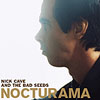 After two excellent albums that marked a daring new direction, it seemsthat Nick Cave has decided to stop and smell the roses. This album ismore a reflection on the twenty years of music he has made with the BadSeeds than it is a step forward. Instead of picking up where 2001's No More Shall We Partleft off, Cave has attempted to craft an album that marries the rawsound of his earlier releases with his more refined recent efforts. Theresult, unfortunately, is a schizophrenic album whose best songs sufferdue to a lack of cohesion.
After two excellent albums that marked a daring new direction, it seemsthat Nick Cave has decided to stop and smell the roses. This album ismore a reflection on the twenty years of music he has made with the BadSeeds than it is a step forward. Instead of picking up where 2001's No More Shall We Partleft off, Cave has attempted to craft an album that marries the rawsound of his earlier releases with his more refined recent efforts. Theresult, unfortunately, is a schizophrenic album whose best songs sufferdue to a lack of cohesion.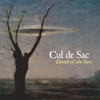 Tradition and innovation are powerful forces, always tugging, tearingat each other, one struggling to hold on, and the other struggling tobreak free. This is a tension observable right now in our culture, asthe means of producing electronic music becomes available to mostanyone with a personal computer and an idea, these new concepts of whatconstitutes artistic expression often clash with established notions ofwhat makes something real or true. These are cultural growing pains, asensation of vertigo that comes with progress and the flexing ofboundaries. On Death of the Sun,Cul de Sac takes both tradition and innovation and uses themingeniously to create harmony from tension. The members of Cul de Sacbegan by assembling a myriad of sources and samples from antique vinylrecords to ambient forest and city soundscapes. These sources were thenelectronically manipulated and modified to serve as a musical spine forthe piece. Throughout the album, fuzzy, distant voices drift inmomentarily amidst clicks and static. The electronic foundation issolid, and its intricacy makes this an amazing headphone listen. Addingeven more layers of complexity, the members of Cul de Sac respond tothis electronic foundation, counter-pointing the synthetic and thetreated with acoustic instruments like violins, guitars, melodicas, anddrums. Their response was not to canned, prepared pieces, but toelectronic sequences that were played live and on the spot duringrecording. On "Dust of Butterflies," a lone acoustic guitar unfolds amusic box melody that itself is sampled and looped over theelectronically modified snapshot of a five-part harmony found on arecord from 1933. "Turok, Son of Stone" consists of a building chorusof primeval percussion that is visceral in its attraction. Thepercussive theme continues through the dark, insistent "Death of theSun," churning dirt and dust before fading away with an aching violin.The final piece, "I Remember Nothing More" samples a minute of an old78-RPM record of Creole songs released in 1940. The singer, AdelaideVan Wey's voice peeks through the tender acoustic guitar, the vinylscratches and fuzz casting her like a faraway, fading transmission. Theeffect is eerie, listening to her soulfulness repurposed in thismanner. The clash between traditional and innovative comes togetherhere, and for a moment, Cul de Sac has made them one concept, oneexpression of clarity. Death of the Sun is a fascinating album,fusing so many seemingly dissonant threads and melding innovative ideasand techniques with traditional sounds and sensibilities.
Tradition and innovation are powerful forces, always tugging, tearingat each other, one struggling to hold on, and the other struggling tobreak free. This is a tension observable right now in our culture, asthe means of producing electronic music becomes available to mostanyone with a personal computer and an idea, these new concepts of whatconstitutes artistic expression often clash with established notions ofwhat makes something real or true. These are cultural growing pains, asensation of vertigo that comes with progress and the flexing ofboundaries. On Death of the Sun,Cul de Sac takes both tradition and innovation and uses themingeniously to create harmony from tension. The members of Cul de Sacbegan by assembling a myriad of sources and samples from antique vinylrecords to ambient forest and city soundscapes. These sources were thenelectronically manipulated and modified to serve as a musical spine forthe piece. Throughout the album, fuzzy, distant voices drift inmomentarily amidst clicks and static. The electronic foundation issolid, and its intricacy makes this an amazing headphone listen. Addingeven more layers of complexity, the members of Cul de Sac respond tothis electronic foundation, counter-pointing the synthetic and thetreated with acoustic instruments like violins, guitars, melodicas, anddrums. Their response was not to canned, prepared pieces, but toelectronic sequences that were played live and on the spot duringrecording. On "Dust of Butterflies," a lone acoustic guitar unfolds amusic box melody that itself is sampled and looped over theelectronically modified snapshot of a five-part harmony found on arecord from 1933. "Turok, Son of Stone" consists of a building chorusof primeval percussion that is visceral in its attraction. Thepercussive theme continues through the dark, insistent "Death of theSun," churning dirt and dust before fading away with an aching violin.The final piece, "I Remember Nothing More" samples a minute of an old78-RPM record of Creole songs released in 1940. The singer, AdelaideVan Wey's voice peeks through the tender acoustic guitar, the vinylscratches and fuzz casting her like a faraway, fading transmission. Theeffect is eerie, listening to her soulfulness repurposed in thismanner. The clash between traditional and innovative comes togetherhere, and for a moment, Cul de Sac has made them one concept, oneexpression of clarity. Death of the Sun is a fascinating album,fusing so many seemingly dissonant threads and melding innovative ideasand techniques with traditional sounds and sensibilities.  While not ground-breaking, this certainly is a fun LP. A decentlyturned out LP is always fun. There's something generous and luxuriousabout them and all the more so in these times of miserable little"jewel cases," measly graphics and microscopic text. The cover of thisLP is satisfyingly nostalgic, looking like a French fusion record fromthe early eighties with, for some reason, a picture of the Osmondfamilly. The inner sleeve is simply delightful - you really have to seeit. If this had been put out on a CD it would seem a scam since it'sonly about 31 minutes long. As for the music, nearly all the elementswe have learned to dread in French music, avant-garde or otherwise,are, if not exactly absent, adequately restrained. Of the star-studdedline up, Jerome Noetinger, Lionel Marchetti and Jean Pallandre arenoted as playing magnétophone à bandes while Marc Pichelin plays synthé analogique and Laurent Sassi handles the enregistrement/mixage (live). It is a fairly chaotic collage of material, sounding sort of like improvised musique concrèteand it's the surprise and contrast of the different material that isthe primary technique. While things eventually get excited enough to benoise art, the starting point is a rather self-concious sound art.There are many references to European music of the 50s and 60s, inparticular the Schaeffer and Henri and the electronic music of Cologneand specifically Kotakte, though I don't think it uses direct quotes.It isn't in bad taste but, frankly, the fashion for this materialbecame tiresome years ago. The sound of variable-speed tape machinesdominate with tapes starting and stopping, rewinding, slowing andaccelerating and the sound of tape being manually yanked through theplayer. In many aspects the music is very familiar but the overallcombination of elements is not and is actually quite fresh and, whilethere's nothing that's truly remarkable or of dazzling brilliance, itis indeed fun.
While not ground-breaking, this certainly is a fun LP. A decentlyturned out LP is always fun. There's something generous and luxuriousabout them and all the more so in these times of miserable little"jewel cases," measly graphics and microscopic text. The cover of thisLP is satisfyingly nostalgic, looking like a French fusion record fromthe early eighties with, for some reason, a picture of the Osmondfamilly. The inner sleeve is simply delightful - you really have to seeit. If this had been put out on a CD it would seem a scam since it'sonly about 31 minutes long. As for the music, nearly all the elementswe have learned to dread in French music, avant-garde or otherwise,are, if not exactly absent, adequately restrained. Of the star-studdedline up, Jerome Noetinger, Lionel Marchetti and Jean Pallandre arenoted as playing magnétophone à bandes while Marc Pichelin plays synthé analogique and Laurent Sassi handles the enregistrement/mixage (live). It is a fairly chaotic collage of material, sounding sort of like improvised musique concrèteand it's the surprise and contrast of the different material that isthe primary technique. While things eventually get excited enough to benoise art, the starting point is a rather self-concious sound art.There are many references to European music of the 50s and 60s, inparticular the Schaeffer and Henri and the electronic music of Cologneand specifically Kotakte, though I don't think it uses direct quotes.It isn't in bad taste but, frankly, the fashion for this materialbecame tiresome years ago. The sound of variable-speed tape machinesdominate with tapes starting and stopping, rewinding, slowing andaccelerating and the sound of tape being manually yanked through theplayer. In many aspects the music is very familiar but the overallcombination of elements is not and is actually quite fresh and, whilethere's nothing that's truly remarkable or of dazzling brilliance, itis indeed fun.
